Announcing the Self-Involvement Blog-a-thon: July 9-13, 2008
To mark the fifth birthday of Culture Snob – born July 10, 2003 – I’ll be hosting the Self-Involvement Blog-a-thon from Wednesday, July 9, to Sunday, July 13. Put simply, the Self-Involvement Blog-a-thon is about the intersection of movies and life. My hope is that it will serve as a celebration of the power of the moving picture removed from the critical, cultural, and financial contexts in which it is typically considered.

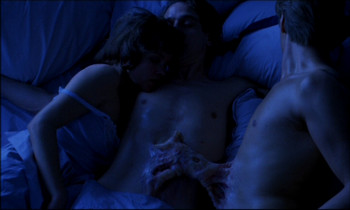 When you think of David Cronenberg, you’re likely to see fusion: Brundlefly, a living typewriter, a gun made of bones. All of those are the work of
When you think of David Cronenberg, you’re likely to see fusion: Brundlefly, a living typewriter, a gun made of bones. All of those are the work of  It’s too long. We’re miffed by the nominations, and sometimes the process itself. The production numbers are cheesy and interminable. We’re displeased with the final results more often than not. Years later, we’re typically embarrassed by the outcome. So let’s scrap the Oscars and replace this evil with another: We’ll choose the best movie of the year through something similar to the presidential-selection process.
It’s too long. We’re miffed by the nominations, and sometimes the process itself. The production numbers are cheesy and interminable. We’re displeased with the final results more often than not. Years later, we’re typically embarrassed by the outcome. So let’s scrap the Oscars and replace this evil with another: We’ll choose the best movie of the year through something similar to the presidential-selection process.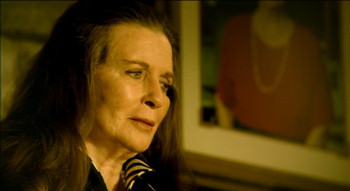 Two case studies: Sometimes and somehow, the music video can do things (beyond the song) that seem impossible in any other format, regardless if the aims are serious or silly.
Two case studies: Sometimes and somehow, the music video can do things (beyond the song) that seem impossible in any other format, regardless if the aims are serious or silly.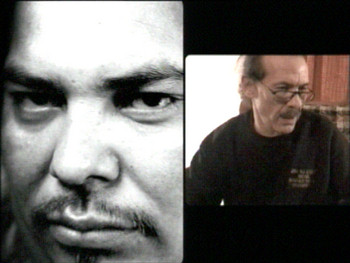 The guy who dominates Stefan Nadelman’s documentary short Terminal Bar could be related to Robert Crumb, both in his physical features and his matter-of-fact way. He talks about everything from death by alcohol to bathroom blowjobs to the “destituted” people who frequented the titular establishment where he tended bar for a decade. And like the famous cartoonist Crumb, he seems perpetually amused, and it looks suspiciously like a defense mechanism.
The guy who dominates Stefan Nadelman’s documentary short Terminal Bar could be related to Robert Crumb, both in his physical features and his matter-of-fact way. He talks about everything from death by alcohol to bathroom blowjobs to the “destituted” people who frequented the titular establishment where he tended bar for a decade. And like the famous cartoonist Crumb, he seems perpetually amused, and it looks suspiciously like a defense mechanism.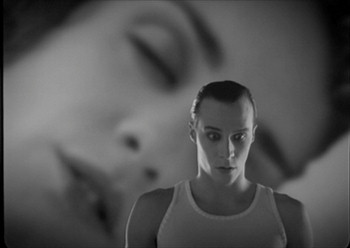 An object within an object of the same type – the novel within a novel, the film within a film – is rarely considered out of its context. Its meanings, and its narrative or thematic roles, are derived from its conversation with the larger work. But if the object is nearly whole – that is, if it’s not just a fragment, if we have a reasonably full sense of its shape, structure, and content – looking at it in isolation can bear fruit and is an act of respect.
An object within an object of the same type – the novel within a novel, the film within a film – is rarely considered out of its context. Its meanings, and its narrative or thematic roles, are derived from its conversation with the larger work. But if the object is nearly whole – that is, if it’s not just a fragment, if we have a reasonably full sense of its shape, structure, and content – looking at it in isolation can bear fruit and is an act of respect.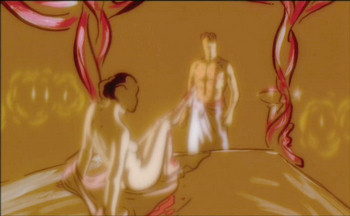 The animated T.R.A.N.S.I.T. is a feature-film plot distilled into 10 minutes, and it shows the ways in which the short film is more forgiving than longer cinematic forms. This movie operates wordlessly almost as a plot outline, and it’s gorgeous to look at and challenging to keep up with. It feels like a small, perfectly cut gem. On reflection, that’s a good analogy, because Piet Kroon’s 1997 short is a beautiful piece of visual craftsmanship that fails as art in any rational analysis.
The animated T.R.A.N.S.I.T. is a feature-film plot distilled into 10 minutes, and it shows the ways in which the short film is more forgiving than longer cinematic forms. This movie operates wordlessly almost as a plot outline, and it’s gorgeous to look at and challenging to keep up with. It feels like a small, perfectly cut gem. On reflection, that’s a good analogy, because Piet Kroon’s 1997 short is a beautiful piece of visual craftsmanship that fails as art in any rational analysis. Like most of his movies, David Cronenberg’s
Like most of his movies, David Cronenberg’s 